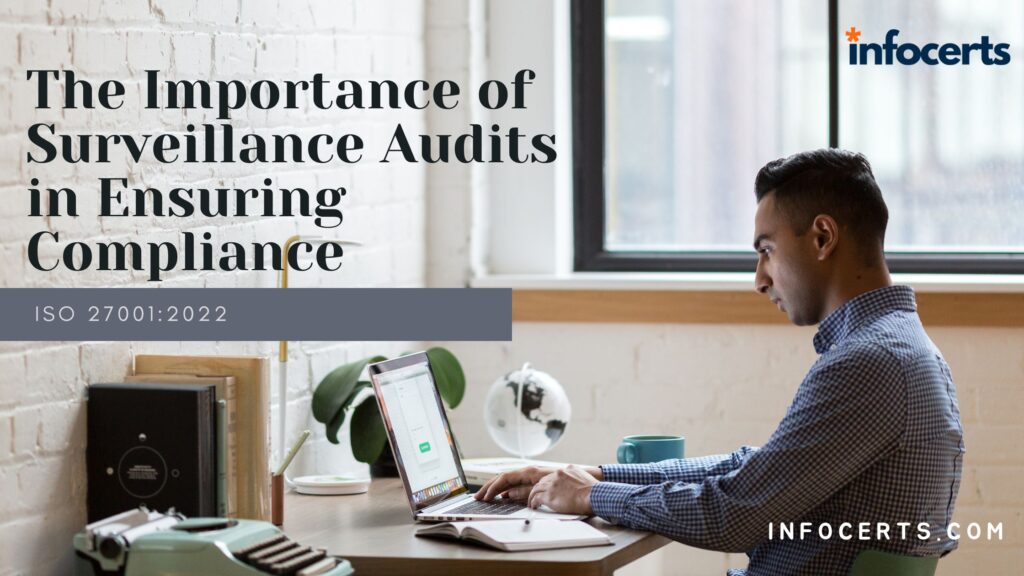Ensuring that an organization remains compliant with established standards and regulations is crucial for maintaining its integrity and reputation. One of the most effective ways to achieve this is through surveillance audits. These regular audits help ensure that a company’s systems continue to comply with the required standards. In this blog post, we’ll delve into what surveillance audits entail, their importance, and how they help organizations stay on track.
What is a Surveillance Audit?
A surveillance audit is a type of regular audit conducted to ensure that an organization’s management system remains in compliance with a specified standard. Unlike initial certification audits, surveillance audits are performed periodically after the initial certification has been granted. Their primary purpose is to verify the ongoing compliance of the system.
Key Features of Surveillance Audits:
| Feature | Description |
|---|---|
| Frequency | Conducted regularly (usually annually) between certification and recertification audits. |
| Focus | Ensures continuous compliance and identifies any areas for improvement. |
| Scope | Covers significant changes in the system, areas of non-compliance, and key processes. |
Why Are Surveillance Audits Important?
Surveillance audits play a crucial role in maintaining the effectiveness and efficiency of a management system. Here are some of the reasons why they are essential:
- Continuous Improvement: These audits provide a mechanism for continual improvement by identifying areas where the system can be enhanced.
- Early Detection: They help in early detection of potential non-compliance issues, allowing organizations to address them proactively.
- Regulatory Compliance: Regular audits ensure that the organization remains compliant with relevant standards and regulations, avoiding penalties and legal issues.
- Stakeholder Confidence: Maintaining certification through regular audits boosts the confidence of stakeholders, including customers, employees, and partners.
The Surveillance Audit Process
The surveillance audit process is methodical and involves several steps to ensure thorough examination of the management system. Here’s an overview of the typical steps involved:
- Planning and Preparation:
- Define the audit scope and objectives.
- Schedule the audit and inform relevant departments.
- Conducting the Audit:
- Review documentation and records.
- Interview employees and observe processes.
- Identify areas of non-compliance and opportunities for improvement.
- Reporting:
- Compile findings into a detailed report.
- Highlight non-compliance issues and provide recommendations.
- Follow-Up:
- Ensure that corrective actions are taken.
- Verify the implementation of improvements.
Example: Surveillance Audits for ISO 27001
ISO 27001 is an international standard for information security management systems (ISMS). Surveillance audits for ISO 27001 are conducted to ensure that an organization’s ISMS continues to meet the standard’s requirements. These audits focus on:
- Risk Management: Ensuring that the organization is effectively managing information security risks.
- Policy and Procedures: Verifying that security policies and procedures are being followed.
- Incident Management: Checking how information security incidents are handled and resolved.
Learn more about ISO 27001:2022 and its importance in information security by enrolling in our comprehensive course.
The Role of Surveillance Audits in Business Continuity
For many organizations, especially those in highly regulated industries, maintaining certification is not just about compliance but also about ensuring business continuity. Regular surveillance audits help businesses:
- Identify vulnerabilities that could disrupt operations.
- Implement best practices for risk management.
- Foster a culture of continuous improvement and vigilance.
Conclusion
Surveillance audits are a critical tool for organizations aiming to maintain compliance with standards like ISO 27001. By regularly reviewing and assessing their management systems, businesses can ensure continuous improvement, maintain regulatory compliance, and uphold stakeholder confidence.
Enroll in our ISO 27001:2022 course today to deepen your understanding of information security management and learn how to conduct effective surveillance audits. Contact infocerts at +91 70455 40400 for more details and to secure your spot in the next training session.
Surveillance audits are not just about ticking boxes; they are about creating a sustainable and resilient management system that can adapt to changes and continuously improve. Embrace surveillance audits as a strategic tool for long-term success.

